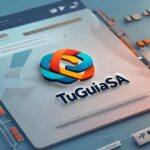Cybersecurity breaches have become a consistent danger in the recent digital world, where sensitive data is stored and exchanged online. The Zeeroq.com data breach of January 2023 is a blunt reminder of the vulnerabilities and susceptibilities within the latest digital platforms. This breach, including the exposure of user emails and passwords, elevated substantial concerns about the safety of personal information and its pervert on the dark web.
This article offers a detailed look at what happened, the extent of the breach, and most significantly, how users can secure themselves from such situations.
What is the Zeeroq Data Breach?
In January 2023, a substantial cybersecurity breach at Zeeroq.com, an online service provider, revealed the sensitive information of thousands of users. This breach involved the leaking of personal data, including emails and passwords, to dark web platforms like leakbase.io. The stolen data, totaling 8.71 GB, was made publicly attainable, probably putting millions of users in danger of identity theft and other vicious activity.
Cybersecurity experts revealed the breach through routine dark web scans, where they exposed that a hacker, opening under the alias “Chucky”, had obtained access to the personal data of Zerooq.com users. Chucky consequently leaked this data on the dark web, making it attainable to anyone seeking to manipulate it.
How was the Zerooq Data Leaked?
The data breach at Zerooq was not the result of a single event but rather part of a broader, systemic cybersecurity failure. The hacker manipulates susceptibilities in its data security system. These susceptibilities enabled him to approach and steal user data, which was then published on leakbase.io, a notorious platform for revealing compromised information.
The breach was recognized by cybersecurity organizations scanning the dark web for potent security hazards. Upon finding the breach, these organizations immediately warned Zerooq.com and law-commissioned agencies to reduce further damage. Despite these efforts, the data leak had already spread swiftly across dark web platforms, leaving users exposed.
The Extent of the Data Leak
One of the most astonishing aspects of the Zerooq data breach was the sheer volume of endangered data. Approximately 8.71 GB of user information was leaked, including sensitive details, such as dates of birth, usernames, and probably even images, may have been leaked as well.
This data, now prevailing on the dark web, could be used by cybercriminals for various spiteful purposes, such as:
- Phishing attacks
- Identity theft
- Unauthorized access to user accounts
- Social engineering scams
The Dark Web and Its Role in Data Breaches
To understand the savagery of the Zerooq breach, it is crucial to perceive the role of the dark web in supporting such situations. The dark web is a secret side of the internet that is not filed by customary search engines like Google. It is known for facilitating unlawful acts including the offer of stolen data, drugs, weapons, and other illegal products.
The dark web is also a pivot for hackers and cybercriminals, who use it to publish and trade cracked details. In the case of Zerooq, the hacker used the dark web to disseminate the stolen data, assuring that it remained attainable to those looking to manipulate it for financial gain.
It was not the only platform influenced by the breach. As trials proceeded, it became clear that the leak was part of a bigger incident known as the Mother of All Breaches (MOAB). This mega-breach influenced multiple online platforms, resulting in the exposure of 26 billion records from different sources. While it was one of the initial victims, it was not the only one affected by MOAB.
Impact on Users
The Zerooq breach has extensive implications for users whose data was exposed. The potent misuse of leaked emails and passwords puts them in danger of identity theft, unauthorized account access, and financial deception. In particular, the exposure of sensitive information could lead to the generation of fake accounts, social engineering attacks, and fraudulent transactions.
One of the more rewarding aspects of the breach was the dread that personal images might have been leaked. Users agitated that hackers could use these images to replicate their identities and be involved in scams or other deceitful activities. Additionally, the exposure of payment details, while not confirmed, embossed warnings about the probability of financial loss for influenced individuals.
The breach also had substantial reputational harm for Zeraaq.com. As users became apprised of the incident, many began questioning the organization’s data security conventions, leading to a loss of conviction and trust in the platform.
Response to the Data Breach
Following the breach, it took instant action to alleviate the damage and restore user trust. The organization issued a public statement endorsing the events and ensuring users that they were working closely with cybersecurity experts to recognize the source of the breach and obtain their system.
It also provided pretentious users free account monitoring services to assist perceive any skeptical activity. These monitoring services offered warnings in case of prohibited access attempts, giving users a chance to act swiftly and hinder further harm.
Furthermore, it executed additional security measures, including robust encryption protocols and multi-factor authentication (MFA) options, to improve user account protection. The company devoted to regularly updating users on the status of the analysis and providing resources to assist them procures their accounts.
How to Protect Yourself After a Data Breach
For those influenced by the Zerooq breach or any similar events, it is essential to take steps to secure personal data and reduce the risk of further exposure. Here is some crucial forethought:
Change Your Passwords: Instantly change the passwords for your account and any other accounts that share the same login documentation. Make sure your new passwords are strong, merging uppercase and lowercase letters, numbers, and symbols.
Enable Multi-Factor Authentication: If Zerooq or any of your other accounts offer MFA, authorize it. This supplementary layer of security needs a secondary verification step, such as a code sent to your phone, to access your account.
Use a Password Manager: Password managers create and store rare, strong passwords for each account, making it complex for hackers to obtain access to multiple accounts through a single breach.
Monitor Your Accounts for Suspicious Activity: Regularly check your accounts for prohibited transactions or login attempts. If you remark anything skeptical, report it to the platform instantly.
Be Wary of Phishing Scams: Cybercriminals might use the leaked information to send phishing emails that emerge legally. Avoid clicking on fishy links or offering personal information in response to spontaneous emails.
Consider Credit Freezing: Freezing your credit can prevent cybercriminals from opening new accounts in your name, assisting in securing your financial identity.
Limit Personal Information Sharing: Reduce the amount of personal data you share online, specifically from opening new accounts in your name, assisting to secure your financial identity.
Limit Personal Information Sharing: Reduce the amount of personal data you share online, specifically on platforms that may not have vigorous security measures in place.

Conclusion
The Zerooq data breach serves as a reminder of the developing hazard of cyberattacks and the significance of staying observant. While no system is thoroughly immune to breaches, taking active steps such as updating passwords, allowing MFA, and controlling accounts can assist minimize the hazard of further damage.
As the digital landscape continues to develop, so too must our approach to data security. By staying enlightened and accepting best practices for online safety, users can better secure themselves from the ever-present danger of cybercrime.






